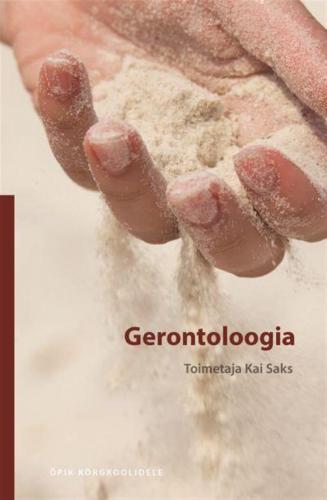6. Crowther MR, Parker MW, Achenbaum WA, Larimore WL, Koenig HG. (2002). Rowe and Kahn’s model of successful aging revisited: positive spirituality – the forgotten factor. The Gerontologist 42, 5: 613–620.
7. Ouwehand C, de Ridder DT, Bensing JM. (2007). A review of successful aging models: Proposing proactive coping as an important additional strategy. Clinical Psychology Review 27, 8: 873–884. doi:10.1016/j.cpr.2006.11.003.
8. Baltes PB, Baltes MM. (1990). Psychological perspectives on successful aging: The model of selective optimization with compensation. In PB Baltes & MM Baltes (Eds.) Successful aging: Perspectives from the behavioral sciences (pp. 1–34). New York: Cambridge University Press.
9. Baltes PB, Baltes MM, Freund AM, Lang F. (1999). The measurement of selection, optimization, and compensation (SOC) by self report: Technical report 1999. Max-Planck-Institut für Bildungsforschung, Berlin, pp. 90. https://www.mpib-berlin.mpg.de/sites/default/files/schriften/Materialien/Materialien_066/pdf/Materialien_Bildungsforschung_MPIB_066.pdf (vaadatud 27.08.2015).
10. Ebner NC, Freund AM, Baltes PB. (2006). Developmental changes in personal goal orientation from young to late adulthood: From striving for gains to maintenance and prevention of losses. Psychology and Aging 21, 4: 664–678.
11. Freund AM, Baltes PB. (2002). Life-management strategies of selection, optimization, and compensation: Measurement by self-report and construct validity. Journal of Personality and Social Psychology 82: 642−662.
12. Kahana E, Kahana B. (1996). Conceptual and empirical advances in understanding aging well through proactive adaptation. In VL Bengtson (Ed.) Adulthood and aging. Research on continuities and discontinuities (pp. 18−40). New York: Springer.
13. Kahana E, Kelle-Moore J, Kahana B. (2012). Proactive aging: A longitudinal study of stress, resouces, agency and well-being in late life. Aging and Mental Health 16, 4: 438–451. doi:10.1080/13607863.2011.644519.
14. Aspinwall LG, Taylor SE. (1997). A stitch in time: self-regulation and proactive coping. Psychological Bulletin, 121, 3: 417–436.
15. Ukraintseva S, Yashin A, Arbeev K, Kulminski A, Akushevich I, Wu D, Joshi G, Land KC, Stallard E. (2015). Puzzling role of genetic risk factors in human longevity: „risk alleles” as pro-longevity variants. Biogerontology 17, 1: 109–127. doi:10.1007/s10522-015-9600-1.
16. The Newcastle 85+ Study http://research.ncl.ac.uk/85plus/outputs/ (vaadatud 2.09.2015).
17. Aktiivsena vananemise arengukava 2013–2020 https://www.sm.ee/sites/default/files/content-editors/eesmargid_ja_tegevused/Sotsiaalhoolekanne/Eakatele/aktiivsena_vananemise_arengukava_2013-2020.pdf (vaadatud 22.09. 2015).
18. Bowling A, Dieppe P. (2005). What is successful ageing and who should define it? British Medical Journal 331: 1548–1551. http://www.ncbi.nlm.nih.gov/pmc/articles/PMC1322264/pdf/bmj33101548.pdf (vaadatud 2.09.2015).
19. Rockwood K, Mitnitski A. (2011). Frailty defined by deficit accumulation and geriatric medicine defined by frailty. Clinics in Geriatric Medicine 27: 17–26.
20. Morley JE, Vellas B, Kan GA, Anker SD, Bauer JM, MD, Bernabei R, Cesari M, Chumlea WC, Doehner W, Evans J, Fried LP, Guralnik JM, Katz PR, Malmstrom TK, McCarter RJ, Gutierrez Robledo LM, Rockwood K, Haehling S, Vandewoude MF, Walston J. (2013). Frailty Consensus: a call to action. Journal of American Medical Directors Association 14, 6: 392–397. doi:10.1016/j.jamda.2013.03.022.
21. Hope AA, Gong MN, Guerra C, Wunsch H. (2015). Frailty before critical illness and mortality for elderly Medicare beneficiaries. Journal of the American Geriatrics Society 63: 1121–1128.
22. Kistler EA, Nicholas JA, Kates SL, Friedman SM. (2015). Frailty and short-term outcomes in patients with hip fracture. Geriatric Orthopaedic Surgery & Rehabilitation 6, 3: 209–214. doi:10.1177/2151458515591170.
23. Cameron ID, Fairhall N, Gill L, Lockwood K, Langron C, Aggar C, Monaghan N, Kurrle S. (2015). Developing Interventions for Frailty. Advances in Geriatrics, article ID 845356. doi:10.1155/2015/845356.
24. Fried LP, Darer J, Walston J. (2003). Frailty. In: Geriatric medicine: an evidence-based approach. Eds. CK Cassel, R Leipzig, HJ Cohen, EB Larson, DE Meier, pp. 1067–1074, Springer, New York, NY, USA, 4th edition.
25. Collard RM, Boter H, Schoevers RA, Oude Voshaar RC. (2012). Prevalence of frailty in community-dwelling older persons: a systematic review. Journal of the American Geriatrics Society 60: 1487–1492. doi:10.1111/j.1532-5415.2012.04054.x.
26. Kahlon S, Pederson J, Majumdar SR, Belga S, Lau D, Fradette M, Boyko D, Bakal JA, Johnston C, Padwal RS, McAlister FA. (2015). Association between frailty and 30-day outcomes after discharge from hospital. Canadian Medical Association Journal 187, 11. doi:10.1503/cmaj.150100.
27. Sergi G, Veronese N, Fontana L, De Rui M, Bolzetta F, Zambon S, Corti MC, Baggio G, Toffanello ED, Crepald G, Perissinotto E, Manzato E. (2015). Pre-frailty and risk of cardiovascular disease in elderly men and Aomen. The Pro.V.A. Study. Journal of the American College of Cardiology 65, 10: 976–983. doi:10.1016/j.jacc.2014.12.040.
28. Uchmanowicz I, Wleklik M, Gobbens RJJ. (2015). Frailty syndrome and self-care ability in elderly patients with heart failure. Clinical Interventions in Aging 10: 871–877. doi:org/10.2147/CIA.S83414.
29. Malmstrom TK, Morley JE. (2013). Frailty and cognition: linking two common syndromes in older persons. The Journal of Nutrition, Health & Aging 17, 9: 723–725.
30. Turner G, Clegg A. (2014). Best practice guidelines for the management of frailty: a British Geriatrics Society, Age UK and Royal College of General Practitioners report. Age and Ageing 43: 744–47. doi:10.1093/ageing/afu138.
31. Morley JE, Malmstrom TK, Miller DK. (2012). A simple frailty questionnaire (FRAIL) predicts outcomes in middle aged African Americans. The Journal of Nutrition, Health and Aging 16, 7: 601–608.
32. Vellas B, Balardy L, Gillette-Guyonnet S, Abellan van Kan G, Ghisolfi-Marque A, Subra J, Bismuth S, Oustric S, Cesari M. (2013). Looking for frailty in community-dwelling older persons: the Gérontopôle Frailty Screening Tool (GFST). The Journal of Nutrition, Health and Aging 17: 629–31.
33. Rockwood K, Song X, MacKnight C, Bergman H, Hogan DB, McDowell I, Mitnitski A. (2005). A global clinical measure of fitness and frailty in elderly people. Canadian Medical Association Journal 173, 5: 489–495.
34. Fit for Frailty. Part 1: Consensus best practice guidance for the care of older people living with frailty in community and outpatient settings. (2014) http://www.bgs.org.uk/index.php/fit-for-frailty.
35. Fit for Frailty. Part 2: Developing, commissioning and managing services for people living with frailty
